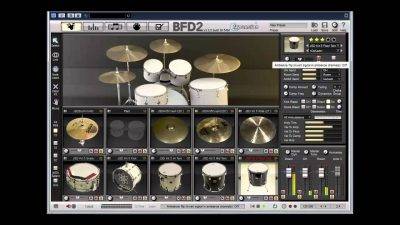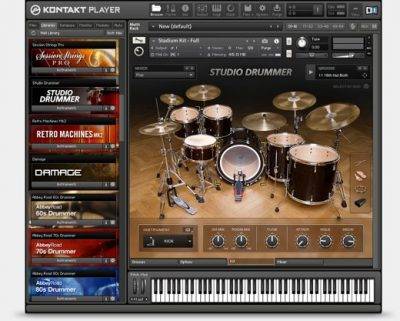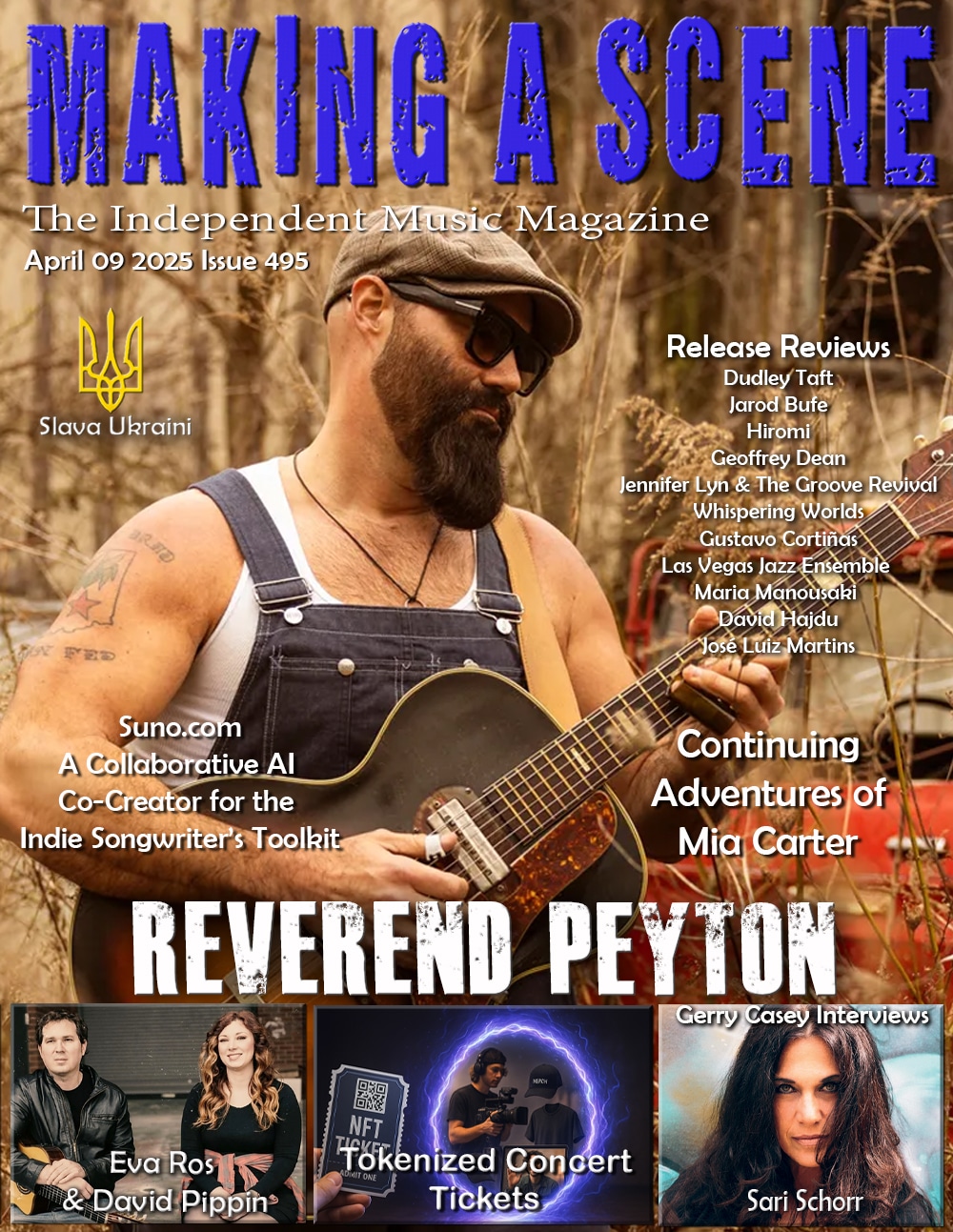Understanding Drum Sample Libraries
Understanding Drum Sample Libraries

From bedroom producers, to the top brass mixing engineers with multiple grammies, there are a lot of people who use drum samples in their mixes. Joey Sturgis is famous for using Kick 10 from Steven Slate Drums in many of his productions (although now Joey Sturgis has his own sample library on the market called Drumforge), and Randy Staub used the same kick sample on most of his career defining records (according to Rick Beato). While some shy away from using them, there’s no denying that drum samples have become an essential piece of the toolkit for many engineers.
If you’re exploring drum samples, and aren’t sure where to start, then I hope this article is of some use to you. We’ll discuss some of the common types of libraries on the market, and what the advantages and disadvantages of those types are. This is going to be an overview, not meant to be an all inclusive article. But if you aren’t sure where to begin, this is for you.
There are multiple libraries available these days. Some have their own sampler interfaces that allow you to have control over the parameters inside of a GUI that is dedicated to the use of those samples. Other libraries allow you to use your own sampler interface. Both options have their pros and cons.
Sample libraries that come with their own dedicated sampler include Steven Slate Drums 4, as well as Addictive Drums 2. Some of these libraries offer unique routing options, allowing you to send the tracks to separate faders in your DAW. This means you could have a fader for each of the drums inside of your session, and enjoy mixing and tweaking them with all of your available tools. These samplers may also include the option of adding your own single velocity “One Shot” samples to the sampler so that you can trigger other sounds that didn’t come with the library.

These types of sample libraries also have another common trait. The samples included in their libraries are often pre-processed. EQ, compression, and other processing has already taken place to get what is commonly referred to as “mix ready” samples. More recently, this type of all inclusive sampler package has also been packaged with unprocessed samples as well. This way people can do only the processing necessary to help the drum sample fit the song’s needs. These samplers give you a quick and easy way to find the drum sound you’re looking for by incorporating intuitive user interfaces, and some include on board effects for tweaking the sounds inside of the sampler itself.
These libraries also claim to retain phase coherency, but it’s important to understand that this isn’t always the case. I’ve typically been able to get tighter phase relationships on sampled drums using MAutoAlign after routing the drums to individual channels. They sounded good already, and technically were in phase with one another, but clearly the phase relationship can often be tighter. Whether or not it sounds better with a tighter phase relationship is going to depend on the song itself, so the rule of thumb applies that “if it sounds good, it is good”. In other words, don’t freak out about the phase relationships inside of samplers like this. Just be aware that these libraries aren’t always as tight as they could be. Also, remember that phase coherency would still be an issue anyway if you’re blending these samples with other samples or with drums that you mic’d and recorded.
Regardless, these tools sound good out of the box, and that makes them valuable from a workflow perspective and from a songwriting perspective. Songwriters can quickly get a great sounding demo of drum tracks without worrying about being an engineer. Beginning engineers can get used to working with great sounding drums, as well as getting used to what a drum should in most cases sound like after processing. Experienced engineers can find this approach as a quick solution for their workflow, as it takes some of the time out of the equation.
But these aren’t for everyone. Some aren’t happy with certain limits that are coded into the samplers themselves. For example, SSD4 has 24 outputs that are configured as 8 stereo and 8 mono outputs. The long anticipated SSD5 is expected to address this concern, but we don’t have a release date for that on the horizon. Meanwhile, there are workarounds. I myself have begun using a single instance of SSD4 for each individual drum, that way I don’t have to worry about being limited by the lack of outputs when using multiple mics on a drum. Here’s a video explaining the approach and how I implement it within REAPER. Start at 5:30 to see me demonstrate this with Steven Slate Drums 4.

Furthermore, one more sampler taking up space in a crowded plugin menu means more clutter to dig through in order to find the tools you want to use. Meanwhile, a dedicated sampler engine like Kontakt allows you to import multiple sample libraries into one single sampler engine. This allows you to blend samples of many different libraries into one very customizable kit that can suit your exact needs.Let’s discuss some of my favorite libraries for Kontakt. We’ll start with Room Sound, which comes in multiple formats for a decent price. Buy individual pieces of a kit for as little as $5 each. Buy full kits, sans snare, starting at $20 and going up depending on the kit. There are two signature series collections from Room Sound as well, bringing you drum sounds from Jay Maas and Kurt Ballou. With the exception of the Kurt Ballou collection, Room Sound’s libraries come in formats compatible with Slate Digital’s “Trigger”, allowing you to load them into Trigger and use Room Sound quickly and easily in place of the drums you have on tape in your DAW. They are also compatible with Massey’s DRT, Kontakt, Drumagog, and include the individual .wav files of all samples so that if you really wanted to customize you could. The Room Sound package comes “uncooked”, with zero processing. This allows you to be in control of the eq, compression, and every other decision made to help you shape your drum sound. While this might be a bit much for a songwriter cutting a quick demo, that doesn’t appear to be Room Sound’s market anyway. My perception of this product is that it was intended for the serious audio engineer to allow ultimate flexibility across the board. An exception to this would be the Kurt Ballou collection, which retains the flexibility mentioned above while bringing in presets created by Kurt and a collection of midi performances that can be played within the interface. This brings the tweakability of the previous libraries to the table, while creating a platform that can be used quickly like Steven Slate Drums.
Another offering for Kontakt, as well as Trigger, is Jigsaw Audio‘s Custom Pack 1 and Custom Pack 2. These libraries both come as pre-processed samples, and Custom Pack 2 also includes unprocessed versions of the samples. I often find myself blending the processed kick from Custom Pack 2 with various kick samples from Room Sound in order to build a kick sound, which is an approach Randy Staub took on many records.
EDITOR’S NOTE: You REALLY should subscribe to Rick Beato’s Youtube Channel!
It’s full of goodies like this!
While the Jigsaw samples are processed to be hard hitting, and great for metal, the unprocessed samples in Custom Pack 2 can be processed to suit the needs of the song you’re mixing. That makes them more flexible for other genres. But there is no rule on how to use any drum samples. If the processed samples work in your song, then trust your gut and go with it.
When deciding which drum library is best for you, ask yourself which options you really need. How much flexibility do you want? How user friendly do you want the interface to be? Do you mind having a different sampler engine for each library, or would you prefer to use one dedicated engine like Kontakt? The choice is up to you and what you feel would benefit your own workflow. My advice is to google each of these libraries, listen to the samples, evaluate your needs, and acquire the ones that fit your needs accordingly. They are all great products in their own right.
Brandon S. Hire
[amazon_link asins=’B0077NIN4S,B003NVEZL8,B00K59YA3O,B00N1Z16LI,B00TV29W5C,B003Y7TYQW,B00JVQDQ5K,B019QTEHTK,B017GEBA9C,B017GE89DC,B0002H0CV8,B00BS2QALC,B00BSB0Y3I,B00FJ1DQME,B00FI6N9UE’ template=’ProductCarousel’ store=’maasc-20′ marketplace=’US’ link_id=’f574f304-faac-11e6-be2e-b1b294dd8b04′]
Discover more from Making A Scene!
Subscribe to get the latest posts sent to your email.















































